|
11 Ways to Help Save Our Forests 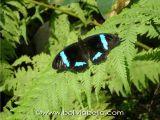
Using less paper can save our forests
Reduce the amount of paper you use. Millions of trees are felled each year to make paper and cardboard products. Many companies replant trees, but these can take decades to grow. Some plant different species than those they’ve cut down, species not in tune with the ecosystems and not of the kind the local wildlife need to survive. Many times they replace trees by planting in completely different areas. Producing paper also requires large amounts of water, which is then contaminated, and chemicals that pollute our air, land and water. * What you should know: - it takes about 12 trees to make one ton of newsprint paper * What you can do: - Buy use books, exchange books with friends, use your library, donate or sell old books
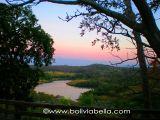
Eating less beef can save our forests Cattle ranching is the leading cause of deforestation in our forests. Huge areas of forest are burned to clear them for pasture. Additional enormous areas are cleared for planting the massive amounts of soy and other grains needed to feed cattle. Cattle often overgraze areas making it necessary to clear even more forest for new pasture. Most cattle companies do not practice reforestation. Bovine methane emissions make up a large part of greenhouse gases emissions. *What you should know: - 80% of Amazon deforestation is due to cattle ranching, more than logging and mining * What you can do: - replace beef in some meals with poultry, pork or fish
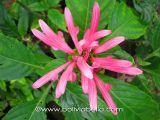
Using fewer soy products can save our forests Soy is used in thousands of products and is also one of the main plants grown to feed livestock. Soy is used in oil, butter, flour, candles, soap, cosmetics, plastics, clothing, home insulation, and even ink. Soy is also a source for biodiesel fuel but the amount of land that must be cleared plant it far exceeds the benefits of using it as fuel. Our forests are being destroyed to grow soy. There is growing concern over some health hazards to eating soy-based products as well. * What you should know: - It takes 8 kilograms of grain to produce 1 kilogram of beef. Much of Bolivia’s livestock is fed soy * What you can do: - Reduce the amount of soy you eat. Consume more vegetables, protein and Omega-3
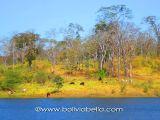
Using less wood can save our forests The most obvious way our forests are destroyed is deforestation for lumber, furniture, the paper industry and firewood. Some hardwood species can take hundreds of years to grow. Important ecosystems are being decimated along with food resources forest animals need to survive. Deforestation leads directly to the extinction of many species each year. Road construction, which is necessary for logging, exposes the forests to unplanned colonization, agriculture, illegal mining, hunting, fishing, and other activities that lead to further destruction. * What you should know: - The felling of one 'selected' tree, tears down with it climbers, vines, epiphytes and lianas * What you can do: - Avoid purchasing furniture made from endangered or threatened forest species
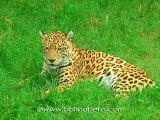
Expanding protected areas can save our forests Local communities that are able to generate income from forest resources and tourist services in a sustainable manner will have a vested interest in ensuring forests will be protected. Community surveillance is the most effective way to patrol a protected area. Education and training of local scientists and guides is also important to ensuring forests are not destroyed. An educated community can see the value in creating and maintaining protected natural areas. * What you should know: - Protected areas are the world’s most cost effective tool for biodiversity conservation * What you can do: - Lobby your national, state or local government to create more protected areas
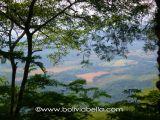
Not buying exotic pets can save our forests Exotic “pets” are wild animals that do not adjust well to a captive environment. They require special care, housing, diet, and maintenance that the average person cannot provide. Exotic “pets” purchased as infants are abandoned by their keepers as they age and become impossible to control. Sanctuaries cannot accommodate the large numbers of unwanted “pets.” As a result, the majority of these animals are euthanized, abandoned, or doomed to live in deplorable conditions. * What you should know: - The illegal wildlife trade is second only to the illegal drug trade in terms of profitability * What you can do: - Don’t purchase exotic or endangered wildlife species, including plants and animals
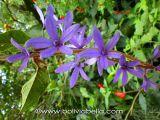
Using less water can save our forests Physical alteration, habitat loss and degradation, water extraction, over-exploitation, pollution and the introduction of invasive species threaten the planet’s freshwater ecosystems and their associated biological resources. More than 20% of the world’s 10,000 freshwater species have become extinct, threatened or endangered in recent decades. Today, 41% of the world’s population lives in river basins under water stress. * What you should know: - Agriculture claims 70% of all the freshwater used by humans * What you can do: - Read the links below for 1000s of easy lifestyle changes we can all make to save water
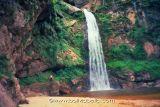
Dams are destroying our forests When dams are built ecosystems downstream suffer because the nutrients normally carried by water are no longer transported to the area. People who depended on water now held back by the dam are forced to uproot their towns and villages and move. Waterborne diseases increase. Dams flood vast areas of forest which eventually rot, causing the water to become acidic, eventually rusting the turbines. * What you should know: - Dams and other infrastructure have caused the fragmentation of 60% of the large river systems in the world *What you can do: Encourage your government to consider every positive and negative aspect before approving a dam construction project. Support organizations that inform about the destruction dams cause.

Mining operations are destroying our forests The world has a voracious appetite for metals, precious metals and gems. Many of these are found in or near our forests. Mining operations clear large portions of forest and also contaminate rivers with chemicals and sludge. * What you should know - Many mining operations often blast river banks, eroding them and killing fish * What you can do - Reduce your use of metals, precious metals, and gems
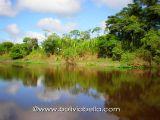
Supporting native peoples can save our forests Native peoples have inhabited our forest areas for thousands of years. They have a great wealth of knowledge about forest resources, their properties, medicinal values, and ecosystems. They typically use only what they need and are good stewards of our forests. As cities and industrial or agricultural project overtake their lands, they lose their homes, their culture and their wealth of knowledge. * What you should know - Latin America’s 50 million indigenous people make up 11% of the region’s population * What can be done - Involve indigenous people who live near protected areas, in park management
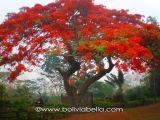
Learning and teaching can save our forests Education is one of the most effectives ways to conserve our forests. By learning all you can about steps you can take to live a greener life, and by helping to teach others, or supporting organizations that do, about the importance of our forests, you help ensure a healthier tomorrow for future generations. * What you should know - We form our habits at an early age. Children learn most of their habits by age 8 * What you can do - Learn everything you can about our forests and how they benefit us, then share what you know     |